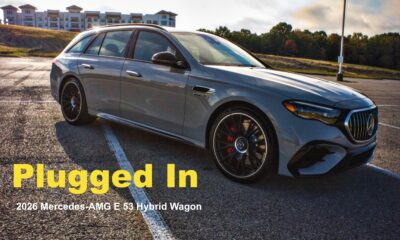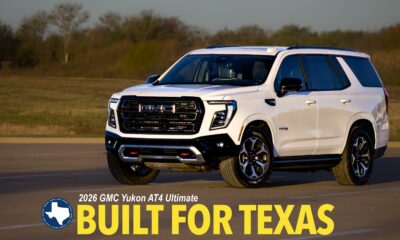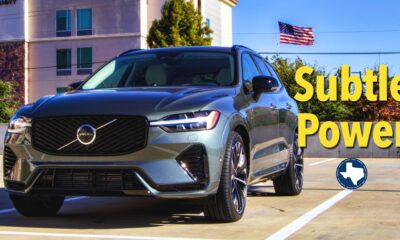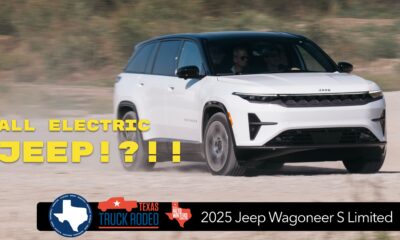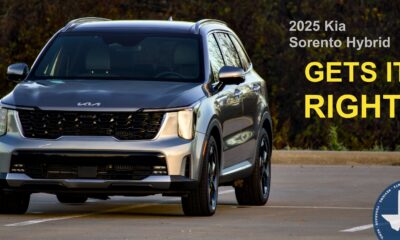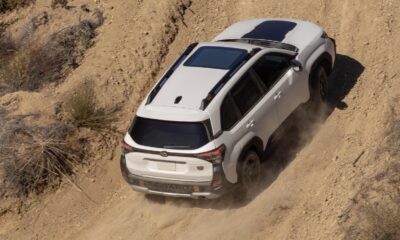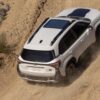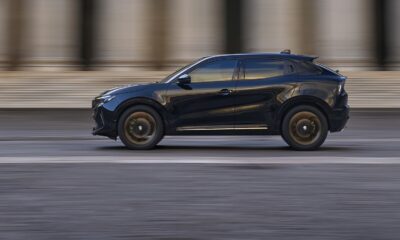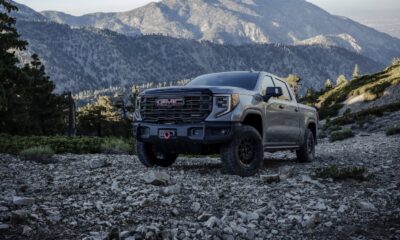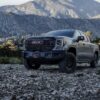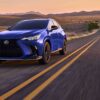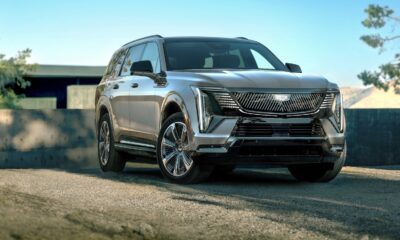Car Reviews
Seven Years Later: VW Atlas Peak Edition Reviewed by a Former Owner
In 2018, I made a decision that many automotive reviewers rarely get to make — I bought the vehicle I had just reviewed. That SUV was a first-generation Volkswagen Atlas, and it checked every box for my growing family: space, value, practicality, and that clean, understated VW design. It wasn’t flashy, but it did the job — and it did it well. We owned that Atlas S trim with the V6 for years, and it became the family workhorse.
Fast forward to 2025, and I’m behind the wheel of the newest version of that same vehicle — the Atlas Peak Edition — now freshly restyled, re-engineered, and positioned as a more rugged, trail-friendly variant of VW’s biggest SUV. A lot has changed since I rolled my 2018 model off the showroom floor for $28,000. The new one? $48,080 as tested. But has it changed for the better?
Let’s dig in.
Rugged Makeover, Same Big Footprint
The Peak Edition is a new-for-2024 trim that carries into 2025 with little change — and that’s no complaint. It adds aggressive design cues to the now-familiar Atlas shape: a gloss-black grille with chrome crossbars, chunky black cladding, silver underbody accents, and a striking “X” fascia design that sets it apart from more suburban trims. Illuminated VW logos front and rear, an upper lightbar, and LED DRLs and taillights complete the modern, upscale look.
The Avocado Green Pearl paint on my tester wasn’t subtle — but it absolutely fit the vibe. So did the 18” black-painted alloy wheels wrapped in all-terrain tires. They might not be built for Moab, but they give the Peak Edition a visual edge you won’t get from the more polished SEL or R-Line models.
Interior Vibes: Utility Meets Signature Style
Climb inside and the Peak Edition plays the part. You’ll find black leatherette upholstery with orange contrast stitching, brushed metallic dash inserts, and an ambient lighting setup that offers 30 colors of glow — all carried over from the 2024 refresh. VW also throws in stainless steel pedal caps, a branded steering wheel badge, and a backlit “Peak Edition” script across the passenger side dash. It’s stylish without trying too hard.
Comfort features are well-covered. You get heated and ventilated front seats, a heated steering wheel, and tri-zone climate control — all standard on this trim. The second row offers a 60/40 split with slide-and-recline, and the third row is easily accessed even with child seats installed. In fact, third-row usability remains one of the Atlas’s greatest strengths. Adults can actually sit back there, and cargo room behind the third row — 20.6 cubic feet — is very usable. Drop everything flat, and you unlock 96.6 cu-ft of total space.
The Driving Experience: Familiar, but Not Flawless
Let’s get this out of the way: I miss the V6.
My old Atlas came with VW’s 3.6L VR6 engine — not fast, but smooth and composed. The 2025 Peak Edition runs the new standard engine: a 2.0L turbocharged 4-cylinder (EA888 Evo4) with 269 horsepower and 273 lb-ft of torque. Those are solid numbers, and the engine feels responsive enough in daily driving, but under load — especially with passengers or cargo — it starts to sound buzzy and strained. Compared to the V6 I had, it’s louder, and somehow less refined.
Part of that could be the Peak Edition’s heavier all-terrain tires or different cabin acoustics, but either way, it’s noticeable. The 8-speed automatic transmission is smooth and unobtrusive, and VW’s 4MOTION AWD system adds real traction and confidence — especially when I took it down a long dirt back road near home to test its light off-road chops. You won’t be rock crawling, but for trailhead parking lots, state park roads, and bad weather? The Peak Edition is more than up to the task.
Steering remains a weak point. As with every Atlas I’ve driven — including the one I owned — the steering is too light and vague, lacking the road feel I expect in a vehicle of this size. You get used to it, but VW really needs to tighten it up in future updates.
Technology: Big Screens, Small Frustrations
The 2025 Atlas carries forward the 12-inch floating touchscreen and Digital Cockpit Pro instrument cluster introduced in 2024. The screens are sharp, colorful, and fast — but they also highlight one of the Atlas’s most controversial changes: the elimination of physical climate controls.
Volkswagen has gone all-in on touch sliders and screen-based menus for volume, fan speed, and temperature. While they look sleek, they aren’t as easy to use on the move — especially if you’re trying to adjust something with gloves on or while bouncing down a rough road.
Tech features otherwise check the boxes: wireless Apple CarPlay and Android Auto, a 15W wireless charging pad, USB-C ports with 45W fast charging, and VW’s IQ.DRIVE safety suite (adaptive cruise, lane assist, travel assist, blind spot monitoring) all come standard.
Towing & Utility: Built for More than Soccer Runs
One area where the Atlas continues to impress is towing. The Peak Edition includes a factory trailer hitch and is rated for 5,000 lbs, just like its V6 predecessors. I haven’t personally towed with any Atlas — including this one — but I could easily see this pulling a small camper or utility trailer for a family weekend trip. The AWD system and longer wheelbase give it a solid, stable footprint for light towing, even if it’s not as confidence-inspiring as a body-on-frame SUV.
Compared to rivals, it stacks up well:
- Kia Telluride: 5,500 lbs, 87 cu-ft max cargo
- Honda Pilot: 5,000 lbs, 87 cu-ft
- Toyota Grand Highlander: 5,000 lbs, 97.5 cu-ft
- Chevy Traverse: 5,000 lbs, 97.6 cu-ft
The Atlas trails a bit in third-row cargo capacity (20.6 cu-ft vs. 21–22.9 in others), but leads in total volume — a key strength if you routinely carry gear, luggage, or sports equipment.
Value: A $20K Difference in Seven Years
Here’s the gut check: I bought my 2018 Atlas S with the V6 for $28,000, thanks to dealer incentives at the time. This 2025 Peak Edition costs $48,080. That’s a $20,000 jump — and while you do get more tech, more style, and more safety, it’s hard not to question whether the Atlas has outgrown its original value-focused roots.
That said, if you’re shopping in the $45–50K range for a midsize three-row SUV, this is still a competitive option. The Telluride and Pilot are right there in terms of pricing, and both offer less cargo space. The Atlas remains a top pick if you prioritize space and family usability — even if it’s no longer the budget-friendly sleeper it once was.
Final Thoughts: Still a Family Hauler at Heart
After a week behind the wheel of the 2025 Atlas Peak Edition, I came away with mixed feelings — but mostly respect. Everything I loved about the Atlas back in 2018 is still here: massive interior space, great third-row access, and an easygoing driving demeanor. What’s changed is the price, the powertrain, and the tech interface — not all for the better.
Still, there’s something familiar and comforting about the Atlas. VW didn’t try to reinvent the formula with the Peak Edition — they just gave it a rugged jacket and a few extra trail-friendly features. And for families who want space, confidence, and just a little off-road flair, it’s still a strong contender.



